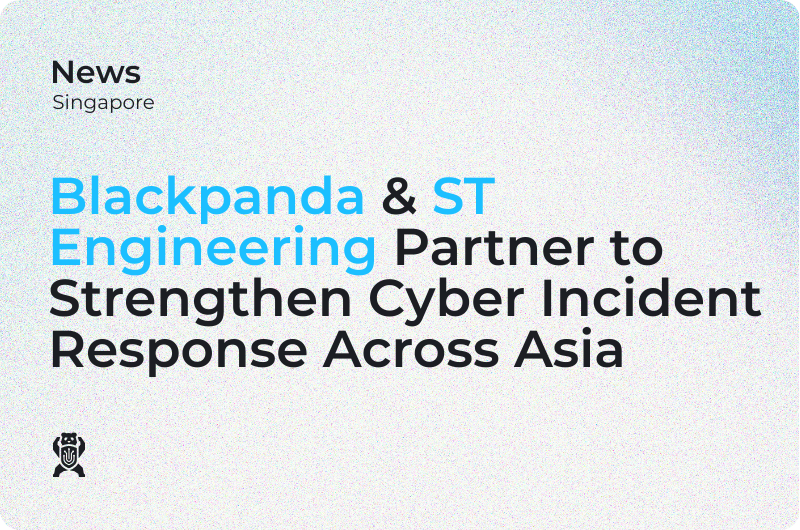Gone are the days when kids received their first phone in middle school—today, children of elementary school age are already tied to their smartphones. It is paramount to establish open and honest channels of communication with your children about safety, privacy, and the Internet.
Deemed as a “cyber pandemic”, the Child Online Safety Index (COSI) of Singapore highlights that 60% of children aged 8–12 who are active online users are exposed to cyber risk. Moreover, 45% of children within the same age range are affected by cyberbullying (proven to have long-standing mental health implications among youth).
While the cyber world and the threats that loom within it might seem daunting, it need not be. Here are some tips to help keep your kids safe online.
1. Teach Kids About Secure Passwords
Using your dog's name, best friend's name, favorite sports team, or birthday as your password is not the way to go—a common mistake made not only by kids but also many adults! As a refresher, a good password contains capital and lowercase letters, numbers, symbols, and is at least 10 characters long. Length matters a lot!
Hackers have gotten very good at cracking passwords. Some automated programs can hack simple passwords in hours, even minutes if the user inputs known facts about the victim like birthdays, pet names, or anniversaries. Kids may have a higher tendency to overshare online as they may not yet have a solid understanding of privacy. This makes them easier targets for these kinds of password-cracking tactics.
Another common mistake made by children is sharing passwords with their friends or logging into their social media accounts on a friend’s device and forgetting to log out. Explain to your children the effects of sharing login credentials—if your friend gets hacked, you may be compromised too. Lastly, you can check if your children’s credentials (or yours) have already been compromised using services like ‘have i been pwned’.
2. Understand the Risks of Torrenting and Illegal Streaming
While torrenting a movie may be a free alternative, the low price tag comes with many hidden costs—including downloading malware or any ransomware payments to restore encrypted files following a breach. Even illegal streaming sites often use ‘malvertising’ (malware advertising) pop-up windows disguised as a general advertisement. As many or most of these services are illegal, you and your children should not trust any downloads or interaction with such sites.
Talk to your kids about the risk of these services and, if necessary, implement appropriate parental controls on your children’s browser for added security. Use Internet content filters to block accessing or downloading unwanted web content such as offensive, malicious, or scamming content.
3. Educate Your Children on the Value of Privacy and Boundaries
Kids these days tend to overshare on social media. It is crucial that children understand the meaning and importance of privacy and boundaries.
“Stranger danger” is real and more prevalent than ever on social media with the rise of social engineering. Put simply, social engineering is a non-technical strategy used by cyber attackers that leverages human interaction and relationships to gain unauthorized access to accounts, files, and systems.
The same way your children should not talk to or give personal information to a stranger on the street, this habit should extend into the cyber realm. As a parent, you can protect your child by starting discussions on privacy and online interactions early, even before the day they are given access to a smart device.
You can help your children set boundaries by implementing rules and agreements on using electronic devices such when, where and why. Use technology such as parental control applications to better enforce these agreements.
4. Be Aware of and Teach Kids How to Identify Signs of Cyberbullying
Lastly, a child’s online security extends to a child’s mental health when interacting online. Cyberbullying comes in many shapes and forms including disclosing someone’s personal or private information online without their consent, harmful comments or messages, impersonation, and exclusion from e-groups. The effects of cyberbullying can manifest itself in many ways including lack of appetite, social isolation, and self-harm.
As adults, you must be able to identify these signs. Children often do not know when to speak up or feel ashamed, but it is important that they know that help is always there, should they need it. Below are some local resources that may help you if you suspect signs of cyberbullying.
Looking For Help in Singapore?
- The Cyber Security Agency of Singapore has a website dedicated to cyber safety called “Gosafeonline”. The website is supplemented with Facebook, and Twitter pages where you can find practical bite-size tips and downloadable resources to educate yourself on online safety. A dedicated section for parents to learn more about protecting their children online also exists within the site.
- Cyberbullying is a criminal offense under the Protection from Harassment Act (POHA) of Singapore. Report cyberbullying to the police. Similarly, cyberstalking and online harassment are also deemed as a criminal offenses under the POHA.
- The Ministry of Education (MOE) has a Cyber Wellness education program, that conducts cyber wellness education through curriculum, workshops, talks, and activities in local schools. Resources from the MOE about Safeguarding your Child Online and the Guide for Parents on Setting Parental Controls are easily accessible.
Reference:
- 2020 Child Online Safety Index & Country Level Reports by the DQ Institute https://www.dqinstitute.org/child-online-safety-index/






